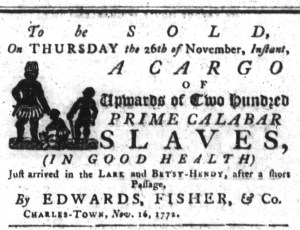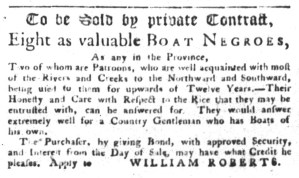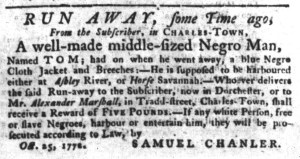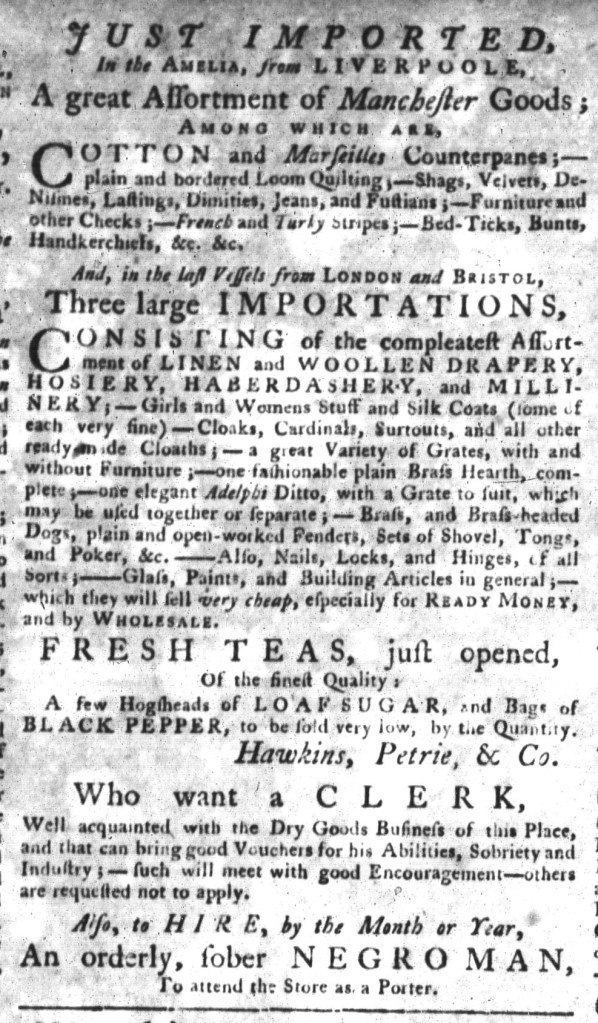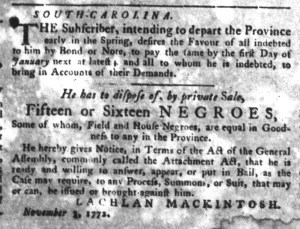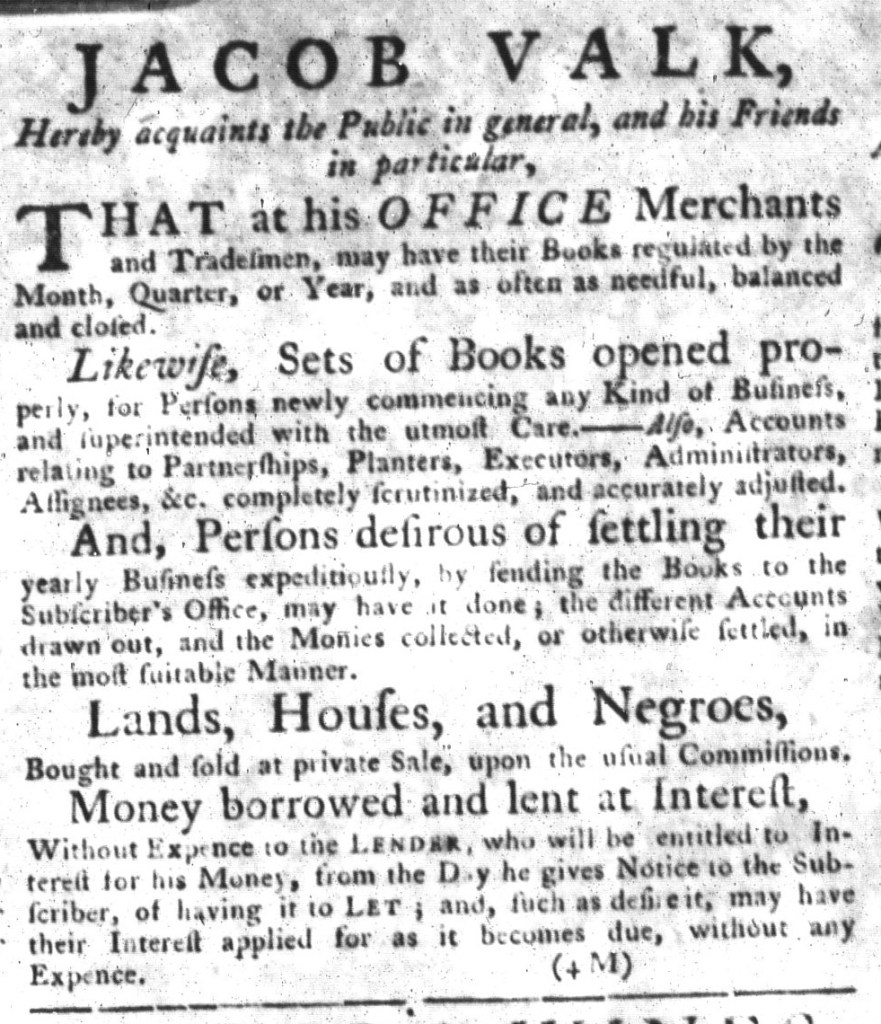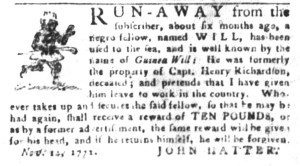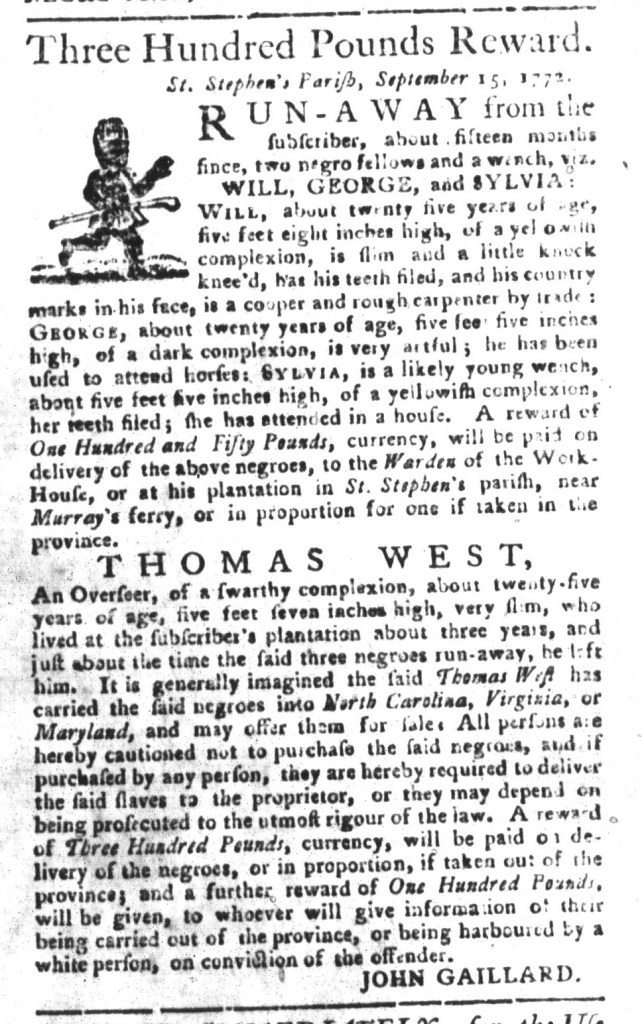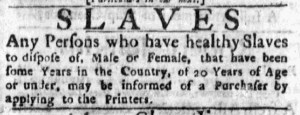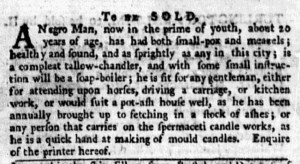What was advertised in a colonial American newspaper 250 years ago today?

“A TRACT of six hundred acres, including about two hundred of cleared land.”
George Washington possessed a “TRACT of six hundred acres … lying on the north side of Rappahannock river, opposite to the lower end of Fredericksburg” that he wished to sell, rent, or exchange “for back lands in any of the northern counties” of Virginia in the fall of 1772. To that end, he ran advertisements in the Virginia Gazette published by Alexander Purdie and John Dixon and the Virginia Gazette published by William, calling on interested parties to “enquire of Col. Lewis in Fredericksburg” or himself in Fairfax.
Thick black lines appeared on either side of Washington’s advertisement in the November 19 edition of Rind’s Virginia Gazette, but those lines had nothing to do with the advertisement itself. Instead, those lines adorned all four pages of that issue, separating columns of news and advertising on each page. Readers recognized them as mourning borders, a common practice among eighteenth-century printers upon the deaths of prominent and influential people. When readers first glimpsed the front page of the newspaper, they would have known that it contained news about the death of someone important. In addition to the black borders between the columns, Rind also inserted thick black borders into the masthead. Similar borders helped readers find news of the death of “the Honourable WILLIAM NELSON, Esquire, President of his Majesty’s Council of Virginia” when they turned to the second page. Those borders ran above and below the announcement of Nelson’s death. In contrast, a shorter item about the death of William Templeman, a merchant in Fredericksburg, did not feature mourning borders above and below, only to the sides like the rest of the contents of that edition. Many readers in Williamsburg, the capital of the colony and the site of the printing office, would have heard the news before receiving the newspaper, but for readers at a distance the mourning borders immediately alerted them to peruse the issue for a certain kind of news.
In that issue of the Virginia Gazette, the news of Nelson’s death had an impact on the appearance of Washington’s real estate notice and every other advertisement. Even readers who had previously heard the news could not read any of the notices without encountering a reminder of that significant event.









